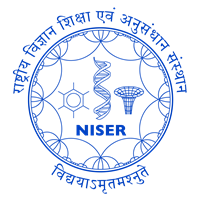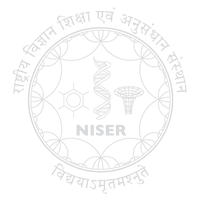The Centre for Medical and Radiation Physics at NISER will be conducting the following programs:
-
Master’s Program in Medical and Radiological Physics (2 years + 1 year internship in collaborating hospitals)
-
Research and Development on radiation devices for societal applications and research programs.
-
In future, envisages to have a medical cyclotron facility and take load for standardization / Calibration / Validation of various medical physics devices at least in eastern region of the country.
The Master’s program is the first of its kind in the State of Odisha. This is also first of its kind program at Master’s level being conducted by an institution of the Department of Atomic Energy, Govt. of India.
Master’s Program in Medical and Radiological Physics
The master's program in medical and radiological physics has been designed according to the syllabus prescribed by the Homi Bhabha National Institute (HBNI), Mumbai. It has a rigorous curriculum with emphasis on physics, radiology and its medical applications.
Degree awarding institute: Homi Bhabha National Institute, Mumbai
Duration of the course: 2 years Master's program and 1 year mandatory internship.
Total No. of seats: 10
Minimum qualification and selection: 60% marks in B. Sc with physics as a main course. There will be an entrance exam/national level test, followed by interview for selection.
Fellowship: ₹16,000/- p.m. + HRA and Contingency as per DAE rules, during master’s program.
Internship hospitals as per AERB guidelines: All India Institute of Medical Sciences, Bhubaneswar and Acharya Harihara Post Graduate Institute of Cancer, Cuttack
Course Structure
SEMESTER-I
| Course |
Credits |
Lecture Hours |
Tutorial Hours |
Remarks |
| Classical Mechanics |
8 |
40-45 |
10-15 |
Core Course |
| Statistical mechanics and thermodynamics |
8 |
40-45 |
10-15 |
Core Course |
| Mathematical Physics |
8 |
40-45 |
10-15 |
Core Course |
| Electrodynamics |
8 |
40-45 |
10-15 |
Core Course |
| Laboratory course on Modern Physics and Nuclear Physics |
6 |
10-15 experiments |
Core Course |
SEMESTER-II
| Course |
Credits |
Lecture Hours |
Tutorial Hours |
Remarks |
| Quantum Mechanics |
8 |
40-45 |
10-15 |
Core Course |
| Electronics and Instrumentation |
8 |
40-45 |
10-15 |
Core Course |
| Solid State Physics |
8 |
40-45 |
10-15 |
Core Course |
| Nuclear Physics |
8 |
40-45 |
10-15 |
Core Course |
| Laboratory course on Electronics and Solid State Physics |
6 |
10-15 experiments |
Core Course |
SEMESTER-III
| Course |
Credits |
Lecture Hours |
Tutorial Hours |
Remarks |
| Radiation Physics and Radiation Generators |
8 |
40-45 |
10-15 |
Core Course |
| Radiological Mathematics |
8 |
40-45 |
10-15 |
Core Course |
| Radiation detectors and instrumentation |
8 |
40-45 |
10-15 |
Core Course |
| Radiation dosimetry and standardization |
8 |
40-45 |
10-15 |
Core Course |
| Laboratory course on Nuclear, Radiation and Solid State Physics |
6 |
10-15 experiments |
Core Course |
SEMESTER-IV
| Course |
Credits |
Lecture Hours |
Tutorial Hours |
Remarks |
| Clinical and Radiation Biology |
8 |
40-45 |
10-15 |
Core Course |
| Medical Imaging |
8 |
40-45 |
10-15 |
Core Course |
| Radiation Therapy |
8 |
40-45 |
10-15 |
Core Course |
| Radiation Safety |
8 |
40-45 |
10-15 |
Core Course |
| Laboratory course on Radiation therapy, Safety and Instrumentation |
6 |
10-15 experiments |
Core Course |
Research and Development on radiation devices for societal applications and research programs
The centre intends to take up R&D work on development of radiation detectors for various needs such as
- Medical Imaging
- Muon Radiography and Tomography
- Neutron Detection
- Quality Assurance in Hadron Therapy
- Environmental Gamma Measurements
- Astrophysics/Nuclear Physics and High Energy Physics Applications
Medical Cyclotron and QA and Validation Programs (Future)
In future, the centre will try to setup a Medical Cyclotron Facility for Radioisotope production. Try to get accreditation for personnel or individual monitoring service, for certifying Quality Assurance Parameters for Radiotherapy Equipment, Type Approval (TA) of Radiation Generating Equipment. Contribute towards - Brachytherapy Source Standardization Programme - National regulatory authority mandates that all radiation sources used for therapeutic applications should have calibration traceable to National Standards laboratory, as it is the practice internationally. Finally contribute towards quality audit which is another important tool for the evaluation of the adequacy of the radiotherapy treatments being delivered. It is also internationally accepted that dose distribution across the clinical target volume (CTV) better than ±5% leads to acceptable treatment outcome for cancer patients.


